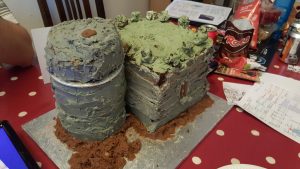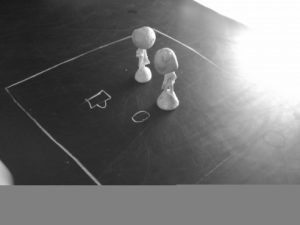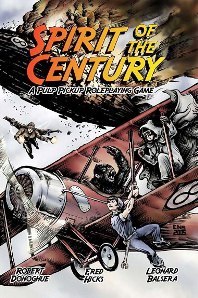For the last few months, I’ve been GMing a GURPS campaign (that was originally a Warhammer Fantasy Roleplay 1st-edition campaign, in turn built upon a mixture of commercially published and homegrown modules, including, in turn, an AD&D module…) for a few friends.
So far, it’s included such gems as a player-written poem in a fictional language, another player’s drawing of the most-cinematic action sequence they’ve experienced so far… and the opportunity, during a play session that coincided with a player’s birthday, to explain the layout of a ruined tower by presenting them with a cake baked into the shape of the terrain.

If you’re interested in what we’ve been up to, the campaign has it’s own blog where you can read about the adventures of Newman, Bret, Lythil, Keru, and (the late) Sir Bea.
But mostly I wanted to make this post so that I had a point of context in case I ever get around to open-sourcing some of the digital tools I’ve been developing to help streamline our play sessions. For example, most of our battle maps and exploration are presented on a ‘board’ comprised of a flat screen monitor stripped of its stand and laid on its back, connected via the web to a tool that allows me to show, hide, or adapt parts of it from my laptop or mobile phone. Player stats, health, and cash, as well as the date, time, position of the sun as well as the phases of the moons are similarly tracked and are available via any player’s mobile phone at any time.

These kinds of tools have been popular for ‘long-distance’/Internet roleplaying for years, but I think there’s a lot of potential in locally-linked, tabletop-enhancing (rather than replacing) tools that deliver some of the same benefit to the (superior, in my opinion) experience of ‘proper’ face-to-face adventure gaming. Now, at least, when I tell you for example about some software I wrote to help calculate the position of the sun in the sky of a fictional world, you’ll have a clue why I would do such a thing in the first place.






